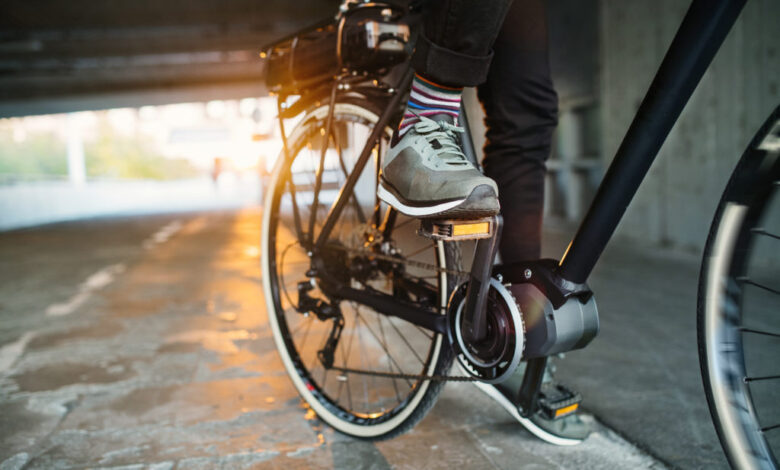What Illinois Law Says About Riding An Electric Hybrid Bike

Gas prices have never been so high today than in the past several decades. The latest data from the American Automobile Association’s (AAA) Gas Prices tracker indicates that the average is nearly USD$4.60 a gallon (as of May 19, 2022). Illinois, for that matter, is never far off from the top five states with the most expensive fuel, with the average close to USD$5.00 a gallon.
With these figures set to go up in the coming months or years, it’s no surprise that Americans are turning to alternative modes of travel. One of these is an electric hybrid bike, which comes with an electric motor to provide extra pedaling power. But before buying one, it pays to know where the state government of Illinois stands on their use.
Low-Speed Electric Bicycle
The most comprehensive state law passed concerning electric hybrid bikes is perhaps Public Act 100-0209, signed in 2018. Aside from amending several sections of the Illinois Vehicle Code, it added new ones to define these bikes as “low-speed electric bicycles.”
Interestingly, the law doesn’t consider these bikes “motor-driven cycles” despite being equipped with an electric motor. However, similar to conventional and low-speed gas bikes, electric hybrid bikes must be registered with authorities. There is no statewide registration requirement for these bikes as of the moment, but individual cities and towns may require it.
Meeting the definition of a low-speed electric bike requires two things. First, the bike must meet design guidelines under 16 CFR 1512 (most bicycle manufacturers comply with this, so riders need not worry). Also, the bike’s powerplant must be an electric motor that can generate no more than 750 watts or around one horsepower.
Three-Tier Class System
With the passage of Public Act 100-0209 also comes a three-tier class system for these electric bikes. Illinois became the sixth state to adopt this system after Arkansas, California, Colorado, Tennessee, and Utah. As of this writing, 26 states have enacted comprehensive e-bike legislation.
The definitions of the three classes are uniform across all state e-bike laws: They’re as follows:
- Class 1 – the motor augments the pedaling action but stops assisting at speeds of 20 mph.
- Class 2 – the motor propels the bike forward but stops assisting at speeds of 20 mph.
- Class 3 – the motor augments the pedaling action but stops assisting at speeds of 28 mph; these bikes also require a speedometer installed.
The system determines the specific rules for each e-bike class in every state’s e-bike laws. Here are a few examples specified by Public Act 100-0209:
- Class 2 bikes must feature brakes that disengage the electric motor when applied.
- Class 1 and 3 bikes must have a motor that disengages when the pedaling ceases.
- Class 3 bikes are restricted to riders 16 years old and above, but passengers of any age can ride on one designed to ferry them.
- Local authorities have the right to prohibit the passage of certain classes of e-bikes on bike paths and other roads as necessary.
Safe, Responsible Cycling

Hybrid electric bikes are a step up from their traditional counterparts. With their electric motors helping riders reach higher speeds, these bikes almost enjoy the best of both worlds: a means of travel not dependent on fossil fuel but moves fast enough.
But whether or not motor-assisted, they’re still bicycles. Accidents involving them are a dime a dozen, especially on busy city roads. States are working hard to make their cities and towns more bike-friendly; however, riders have a part to play.
One way is by wearing proper protective gear while biking, namely helmets. Currently, Illinois usually leaves cities and towns to enact their bike helmet laws. Chicago, for instance, requires messengers and delivery riders to wear helmets. Several local governments also mandate them for riders under specific ages.
Nevertheless, don’t wait for the state or local government to pass such laws. Wearing a helmet can mean the difference between life and death. In a study published in the American Journal of Surgery, researchers found that helmets reduced the risk of traumatic brain injury by up to 51% and the risk of death by 44%.
Investing in safety accessories such as reflective vests and signal lights can also help. They allow riders to appear in low-visibility conditions such as night and foggy weather.
Conclusion
The number of bicycles on the road is poised to grow in the coming years, including hybrid e-bikes. Illinois’s e-bike law is more or less a sign that it knows where the wind’s blowing. It’s heartening to know that the state supports bikes as ideal alternatives to cars.



